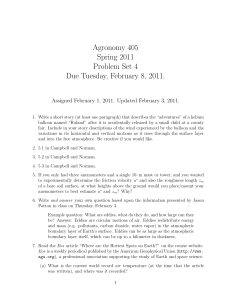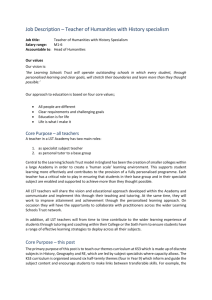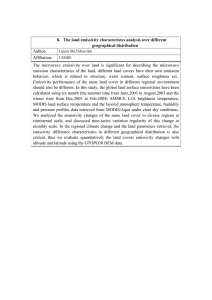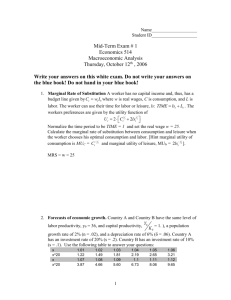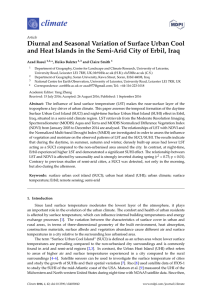37. Land Surface Temperatures from AMSR-E with an... Database Author: Affiliation:
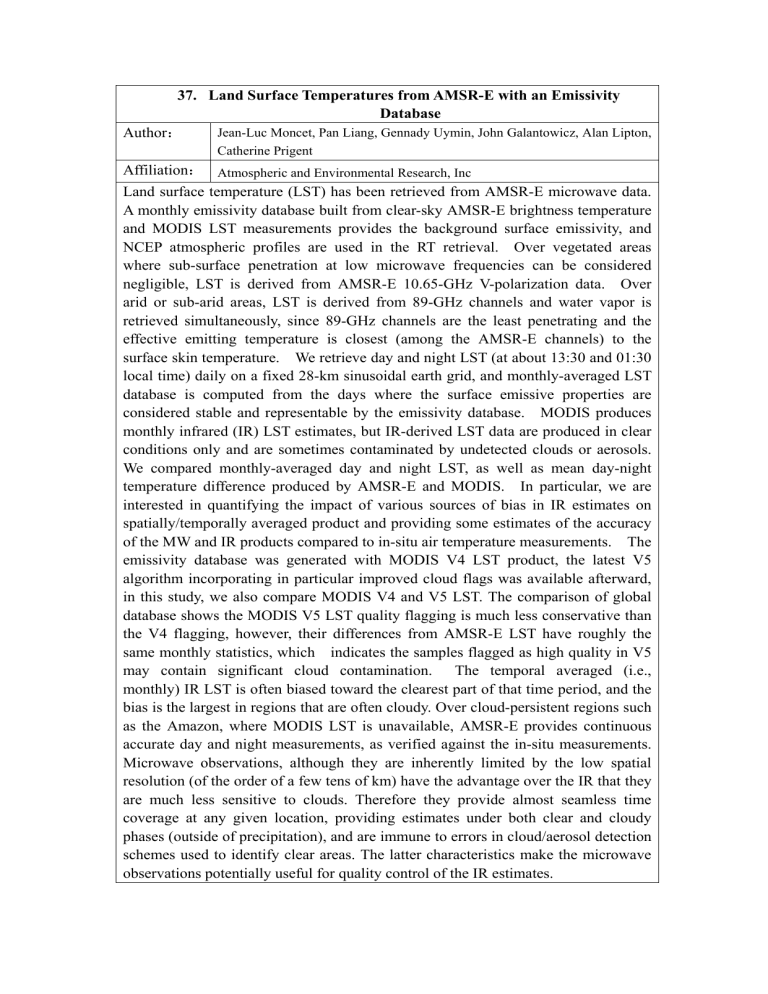
37.
Land Surface Temperatures from AMSR-E with an Emissivity
Database
Author :
Jean-Luc Moncet, Pan Liang, Gennady Uymin, John Galantowicz, Alan Lipton,
Catherine Prigent
Affiliation
:
Atmospheric and Environmental Research, Inc
Land surface temperature (LST) has been retrieved from AMSR-E microwave data.
A monthly emissivity database built from clear-sky AMSR-E brightness temperature and MODIS LST measurements provides the background surface emissivity, and
NCEP atmospheric profiles are used in the RT retrieval. Over vegetated areas where sub-surface penetration at low microwave frequencies can be considered negligible, LST is derived from AMSR-E 10.65-GHz V-polarization data. Over arid or sub-arid areas, LST is derived from 89-GHz channels and water vapor is retrieved simultaneously, since 89-GHz channels are the least penetrating and the effective emitting temperature is closest (among the AMSR-E channels) to the surface skin temperature. We retrieve day and night LST (at about 13:30 and 01:30 local time) daily on a fixed 28-km sinusoidal earth grid, and monthly-averaged LST database is computed from the days where the surface emissive properties are considered stable and representable by the emissivity database. MODIS produces monthly infrared (IR) LST estimates, but IR-derived LST data are produced in clear conditions only and are sometimes contaminated by undetected clouds or aerosols.
We compared monthly-averaged day and night LST, as well as mean day-night temperature difference produced by AMSR-E and MODIS. In particular, we are interested in quantifying the impact of various sources of bias in IR estimates on spatially/temporally averaged product and providing some estimates of the accuracy of the MW and IR products compared to in-situ air temperature measurements. The emissivity database was generated with MODIS V4 LST product, the latest V5 algorithm incorporating in particular improved cloud flags was available afterward, in this study, we also compare MODIS V4 and V5 LST. The comparison of global database shows the MODIS V5 LST quality flagging is much less conservative than the V4 flagging, however, their differences from AMSR-E LST have roughly the same monthly statistics, which indicates the samples flagged as high quality in V5 may contain significant cloud contamination. The temporal averaged (i.e., monthly) IR LST is often biased toward the clearest part of that time period, and the bias is the largest in regions that are often cloudy. Over cloud-persistent regions such as the Amazon, where MODIS LST is unavailable, AMSR-E provides continuous accurate day and night measurements, as verified against the in-situ measurements.
Microwave observations, although they are inherently limited by the low spatial resolution (of the order of a few tens of km) have the advantage over the IR that they are much less sensitive to clouds. Therefore they provide almost seamless time coverage at any given location, providing estimates under both clear and cloudy phases (outside of precipitation), and are immune to errors in cloud/aerosol detection schemes used to identify clear areas. The latter characteristics make the microwave observations potentially useful for quality control of the IR estimates.
